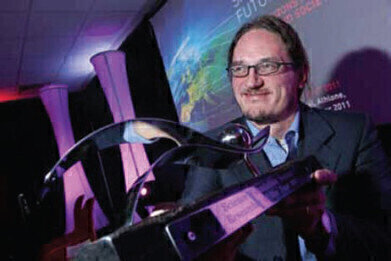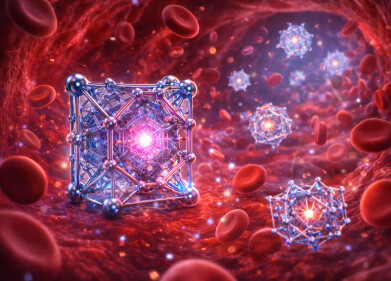-
 Professor Jonathan Coleman
Professor Jonathan Coleman
News
Simple Solution Releases Huge Potential for Nanostructured Materials
Feb 07 2012
Sometimes the best ideas in science are the straightforward ones. So when Irish scientist Prof Jonathan Coleman and his team used a soapy solution to turn a cheap lump of graphite, or pencil lead, into billions of flakes of the strongest and one of the most important nanomaterials known, the result was a major breakthrough.
The experiment itself was simple, but it belies the kind of insight and understanding that has seen Coleman - recognised as one of the top materials researchers in the world and who is Science Foundation Ireland’s Researcher of the Year 2011 - make scientific discoveries that could lead to improved plastics, batteries and electronic displays. Born in Cavan, he studied physics at Trinity College Dublin and for his PhD looked at how to mix nanotubes into plastics to make them stronger and lighter. After spending a brief period at the University of Texas where he developed super-tough fibres from polymer nanotubes, Colman returned to Trinity, where he is now Professor of Chemical Physics at Trinity College Dublin’s School of Physics and a Principal Investigator at the SFI-funded Centre for Research on Adaptive Nanostructures and Nanodevices (CRANN). His interest was piqued by the discovery in 2004 of graphene -nanosheets of carbon with exceptional strength and conductivity and the potential to revolutionise the electronics and manufacturing industries. That discovery, which earned Russian scientists Andre Geim and Konstantin Novoselov a Nobel Prize in 2010, involved a seemingly simple approach: literally peeling single nanosheets of graphene from a three-dimensional crystal of graphite.
Following the discovery Coleman’s team concentrated on an alternative approach to producing graphene nanosheets on a scale potentially useful to manufacturing industries: “SFI had funded us to look at ways of dissolving carbon nanotubes in liquids,” he explained. “This is a problem because everything sticks together on the nanoscale, so you are fighting against nanoscale forces which are based on quantum mechanics so you can’t get rid of them, you just have to try and work around them.”
Then, in a ‘back-of-an-envelope experiment’ the research team tried adding powdered graphite to a beaker of a soapy solution and successfully made billions of individual sheets of graphene. “It worked first time,” recalled Coleman. “Having a liquid containing separated graphene flakes opens the way to using the nanomaterial in various high-tech applications such as electronics and gas sensors as well as making lighter plastics, he explained. “If you could double the strength
of a piece of plastic you would only have to use half as much plastic for a given application. And we have found that by adding graphene using our exfoliating technique we can cost-effectively double both the strength and stiffness of many plastics.”
The research team are also applying the technique to other materials: “It’s important that research has a link to the real world, particularly the economy,” says Coleman. “We have received a grant from the EU and are hoping to team up with a large chemical company to commercialise the production of graphene and other layered materials for a range of applications. In 10 years time, I’d like to look around me and see things like strong light plastics and efficient energy storage devices and know they are enabled by materials developed in Trinity.”
Digital Edition
Lab Asia Dec 2025
December 2025
Chromatography Articles- Cutting-edge sample preparation tools help laboratories to stay ahead of the curveMass Spectrometry & Spectroscopy Articles- Unlocking the complexity of metabolomics: Pushi...
View all digital editions
Events
Jan 21 2026 Tokyo, Japan
Jan 28 2026 Tokyo, Japan
Jan 29 2026 New Delhi, India
Feb 07 2026 Boston, MA, USA
Asia Pharma Expo/Asia Lab Expo
Feb 12 2026 Dhaka, Bangladesh


















